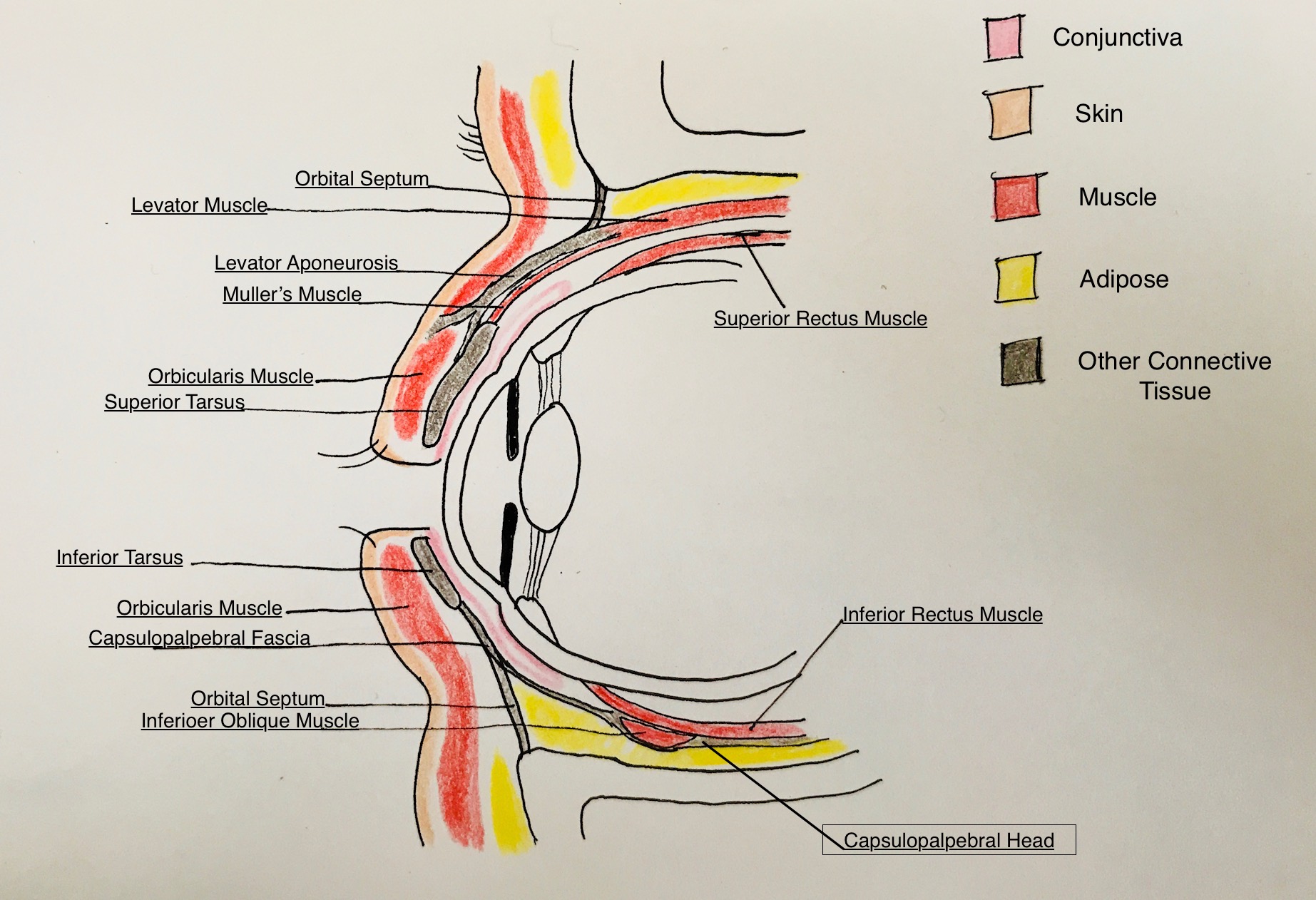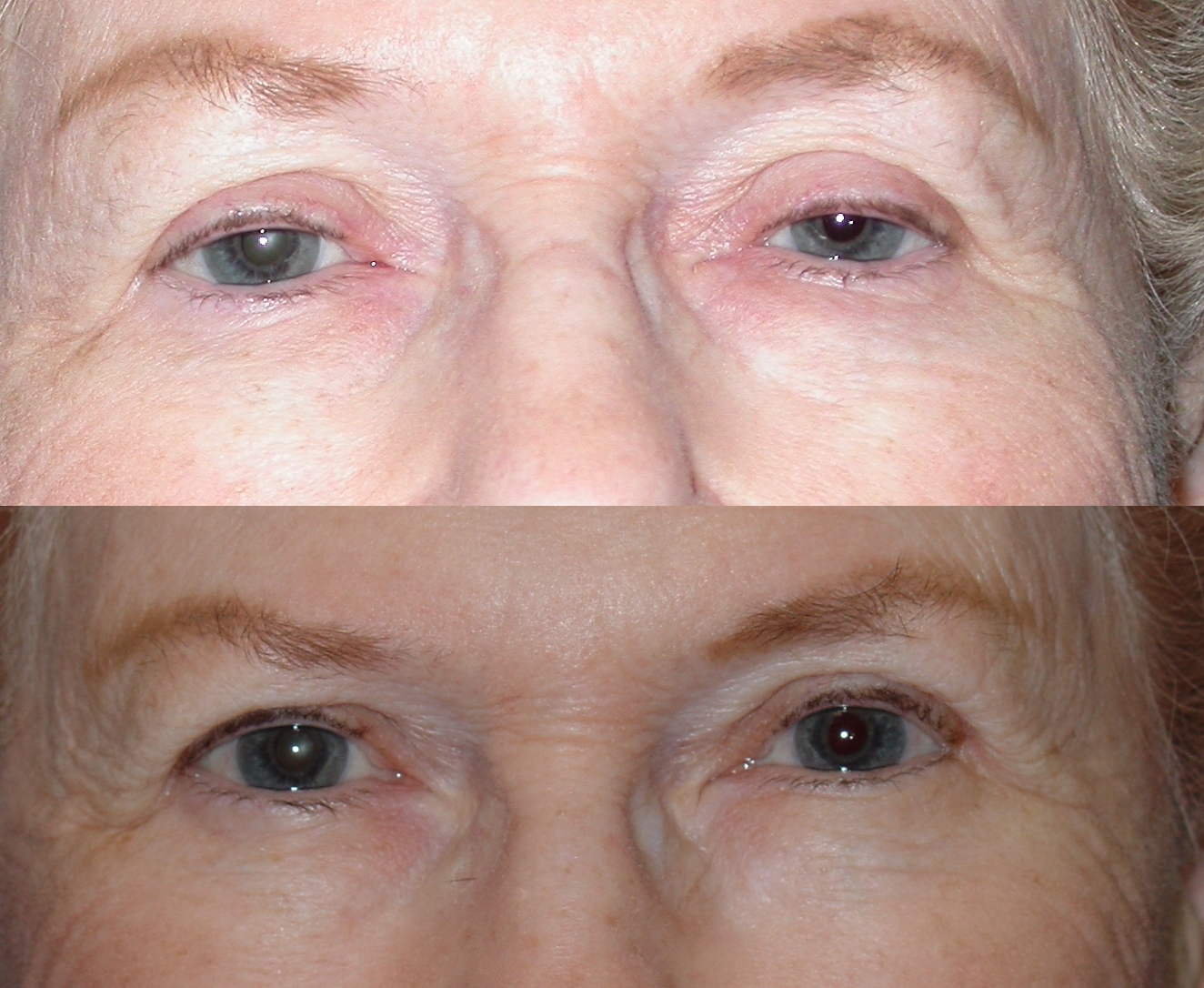[1]
Weaver DT. Current management of childhood ptosis. Current opinion in ophthalmology. 2018 Sep:29(5):395-400. doi: 10.1097/ICU.0000000000000508. Epub
[PubMed PMID: 30096088]
Level 3 (low-level) evidence
[2]
Liu CY, Chhadva P, Setabutr P. Blepharoptosis repair. Current opinion in otolaryngology & head and neck surgery. 2018 Aug:26(4):221-226. doi: 10.1097/MOO.0000000000000463. Epub
[PubMed PMID: 29746305]
Level 3 (low-level) evidence
[3]
Kim MJ, Oh TS. Treatment for ophthalmic paralysis: functional and aesthetic optimization. Archives of craniofacial surgery. 2019 Feb:20(1):3-9. doi: 10.7181/acfs.2019.00066. Epub 2019 Feb 20
[PubMed PMID: 30840813]
[4]
Kokubo K, Katori N, Hayashi K, Sugawara J, Kou S, Fujii A, Kitamura S, Ninomiya R, Maegawa J. Evaluation of the eyebrow position after aponeurosis advancement. Journal of plastic surgery and hand surgery. 2019 Feb:53(1):60-64. doi: 10.1080/2000656X.2018.1547735. Epub 2019 Jan 24
[PubMed PMID: 30676851]
[5]
Chung YH, Kang SY, Choi WS. A case of intramuscular xanthelasma palpebrarum found during blepharoplasty. Archives of craniofacial surgery. 2018 Dec:19(4):296-299. doi: 10.7181/acfs.2018.02068. Epub 2018 Dec 27
[PubMed PMID: 30613094]
Level 3 (low-level) evidence
[6]
Gildener-Leapman JR, Sheps I, Stein R, Benyamini O, Milstein A, Hartstein ME. The Sutureless Mullerectomy. Ophthalmic plastic and reconstructive surgery. 2019 May/Jun:35(3):290-293. doi: 10.1097/IOP.0000000000001331. Epub
[PubMed PMID: 30844915]
[7]
Kokubo K, Katori N, Hayashi K, Sugawara J, Kou S, Fujii A, Haga S, Maegawa J. Evaluation of the eyebrow position after external Müller's muscle tucking: A new technique for ptosis repair. Journal of plastic, reconstructive & aesthetic surgery : JPRAS. 2019 Apr:72(4):662-668. doi: 10.1016/j.bjps.2019.01.010. Epub 2019 Jan 14
[PubMed PMID: 30772203]
[8]
Hwang I, Myung Y, Park S. Levator Pull-Out Suture Technique for Immediate Postoperative Correction of Eyelid Asymmetry After Ptosis Surgery in Asians. Aesthetic plastic surgery. 2019 Apr:43(2):388-394. doi: 10.1007/s00266-018-1276-x. Epub 2018 Nov 27
[PubMed PMID: 30483936]
[9]
Jung GS. Modified Upper Blepharoplasty Using Combination of Incision and Nonincision Surgical Approaches. The Journal of craniofacial surgery. 2019 Jan:30(1):235-236. doi: 10.1097/SCS.0000000000004912. Epub
[PubMed PMID: 30444788]
[10]
Guo S, Yang M, Zhou C, Lv W, Zhang J, Gu C, Fang X. Corrective Strategies for a Complex Deformity Caused by "European-Style Double Eyelid" Blepharoplasty in Asians. Aesthetic plastic surgery. 2019 Apr:43(2):395-403. doi: 10.1007/s00266-018-1262-3. Epub 2018 Nov 19
[PubMed PMID: 30456638]
[11]
Lee JY, Cho K, Choi DD, Park KA, Woo KI, Kim YD, Oh SY. Superior rectus muscle insertion injury following cosmetic upper lid blepharoplasty: a case report. BMC ophthalmology. 2018 Jul 31:18(1):187. doi: 10.1186/s12886-018-0867-2. Epub 2018 Jul 31
[PubMed PMID: 30064402]
Level 3 (low-level) evidence
[12]
Klingenstein A, Hintschich C. [Update on upper eyelid blepharoplasty]. Der Ophthalmologe : Zeitschrift der Deutschen Ophthalmologischen Gesellschaft. 2018 Apr:115(4):266-274. doi: 10.1007/s00347-018-0671-7. Epub
[PubMed PMID: 29516158]
[13]
Lee TS, Wang L, Han R, Mourad M, Ducic Y. Options in Repositioning the Asymmetric Brow from Paralysis and Trauma. Facial plastic surgery : FPS. 2017 Dec:33(6):627-638. doi: 10.1055/s-0037-1607975. Epub 2017 Dec 1
[PubMed PMID: 29195244]



